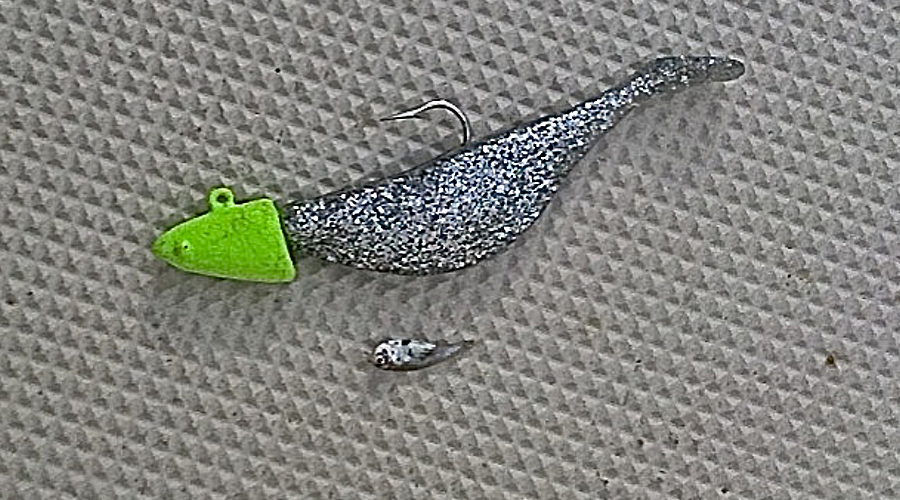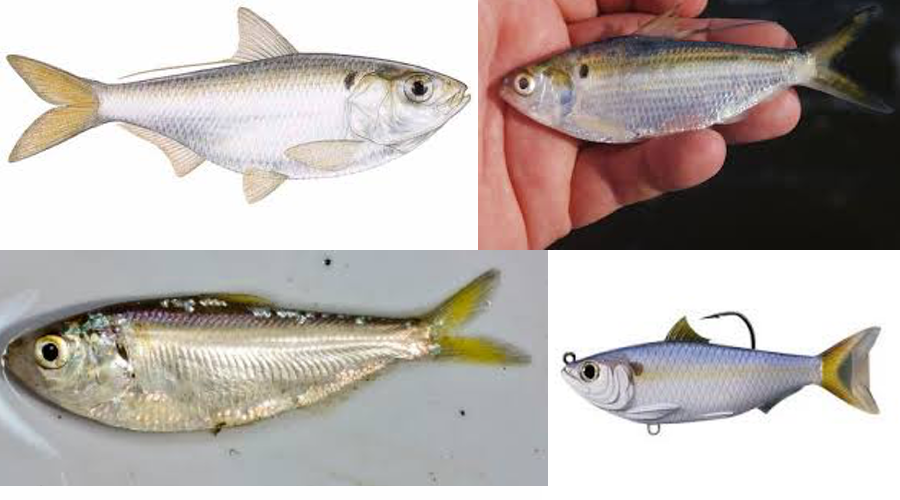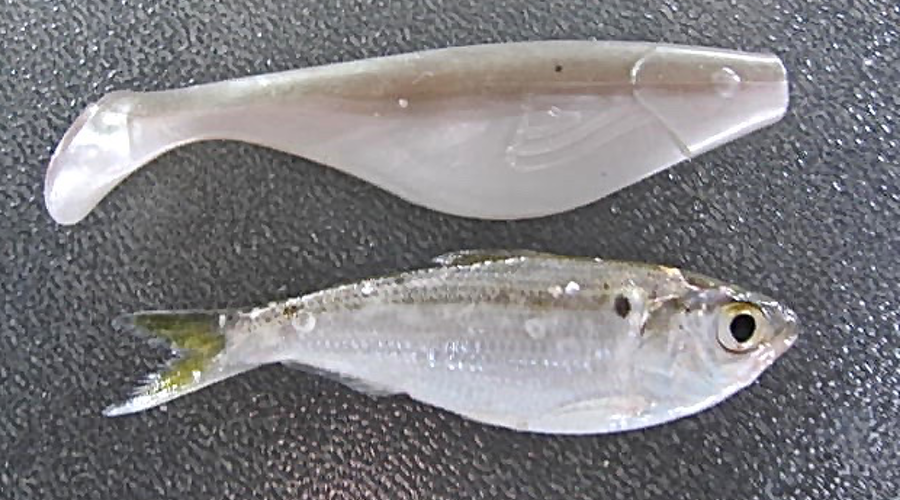Follow The Threadfin Shad-Lake Texoma Striper
Lake Texoma has two types of shad in our impoundments, threadfin and the gizzard shad. Both have profound impacts on the entire aquatic ecosystem because they are such important foods, not only for Striper but also for many other species! Follow The Threadfin Shad on Lake Texoma and you will be a successful Striper Angler! The Striper Capital of the World is dependent on a healthy shad population. Ask the guides that are buying shinners at the bait shops the last month on Texoma.
We are having a very tough time finding shad! Shad are not the only food on the Striped Bass menu. Because Striper are such opportunistic feeders, their diet includes such diverse items as crawfish, bluegill and other small sunfish, frogs, baby ducks, and even their own offspring. Threadfin and Gizzard Shad are 80% of Texoma Striper diet and very important for growth.
Follow The Threadfin Shad and Water Temperatures
Most Lake Texoma Fishing Guides know Striper feed heavily on both gizzard and threadfin shad throughout most of the year, but nature has its own ways of taking care of possible overpopulations of these prolific baitfish. Both species, the threadfin, in particular, are especially sensitive to cold water. In part, this temperature/stress relationship may be one of the reasons shad seem to be continually moving throughout a lake. These movements are not confined to the seasons, but in many instances are daily.
Lake Texoma Striper Guides have occasionally noticed these movements and been able to take advantage of them because fish followed the shad. We have seen reports daily shad migrations that could be tracked for more than half a mile. In nearly every instance, Striper follow behind and underneath the shad, feeding on them!
Ball of Threadfin Shad Lake Texoma Style
These feeding binges appear to occur most often when the school of shad are compressed, as it might be when it funnels along a channel or underwater hump. These also happen to be natural ambush points. Shad are very small and cannot be radio transmitter tagged and thousands are eaten each day. We can not pinpoint why these shad balls occur, but most Lake Texoma Striper Fishing Guides have theories. We know large concentrations of shad will move shallow to seek shoreline cover in the evening. The cover could be a boat dock, weedline, treeline, or other vegetation.
These sheltering shad will move back out to open water in the early morning for deeper water where they will roam Lake Texoma. We visually see large schools of shad on Lake Texoma from time to time, and when we do the Striper Fishing is fantastic! Most of the shad schooling will be viewed on our electronics.

Lake Texoma shad fry hatch in June and August,
Shad Spawn on Lake Texoma
Threadfin Shad and Gizzard Shad spawn in very shallow water over sand, gravel, wood, vegetation, and even mud! The large gizzard shad prefer to spawn in as cold as 57 degrees or as warm as 75 degrees! On Lake Texoma, this means prime time is April. Threadfin can have multiple spawns each year from April to August as long at water temperatures stay between 66 to 75 degrees. The eggs are sticky and cling to the first hard surface they touch. As soon as the eggs are deposited and fertilized, the adults leave.
Incubation for both shad species takes up to three days and, and the fry don’t stay shallow long. The shad fry will move to open water and live near the surface as they grow. The water temperature and pH level will influence what depth the fry will live. Rain, wind, and food availability keep shad fry on the move.
We Found Lake Texoma Shad, Now What?
How do anglers take advantage of shad they have located on Lake Texoma and catch Striper. If you are using lures make sure you match the hatch. If Striper are gorging on Shad Fry and you are throwing a 5-inch swimbaits, catching could get tough. On the live bait side drifting small threadfin shad through Striper feeding in big gizzard shad will not be successful. Look for warmer water in spring near rocks. Shad like the warmer water and will hang out near rocks and Striper will follow. Follow the Threadfin Shad and you will catch Striper on Texoma!
Fishing live bait in 60 feet of water in March will not bring success. Shad may spawn on water breaks or man-made structure in May. This structure can be in 20-30 feet of water and are great spots to target Striper. Always watch for Birds. Most know Seagulls invade Texoma and will show anglers when shad are balled up but pay attention to cranes! White Cowbirds on the bank and big black cranes near the rocks will show you where shad are located.
As winter sets in shad will move to deep warmer water! You will need to watch your electronics for big balls of bait and be prepared to dead stick soft plastics. We put the bait-tanks up for our winter striper fishing.
In conclusion, look for Shad on Lake Texoma:
Early Spring near rocks.
Shallow Water in the early morning and evening.
Be a Bird Watcher.
Winter months be an electronics expert.
June and August look for schooling Striper feeding on small shad fry in open water.
We hope this helps and thanks for reading our blog and remember to follow the threadfin shad the next time you Striper Fish Texoma. If you want to book a trip please call 903-271-4665. For more information please follow Lake Texoma Fishing Guide Justin Parker.
About Lake Texoma Fishing Guide Justin Parker
Lake Texoma Fishing Guide Justin Parker’s Striper Guide Service provides year-round professionally guided, enjoyable morning or afternoon trips. Justin offers customer trips originating from both Texas and Oklahoma Lake Texoma marinas.
Source: Lake Texoma Fishing Guide-Justin Parker
Lake Texoma Fishing Guide Justin Parker Contact Information
Corporate Headquarters
1410 N Alberta Creek Rd.
Kingston OK 73439
PH 903-271-4665
TexomaFishingGuide.JustinParker@gmail.com


